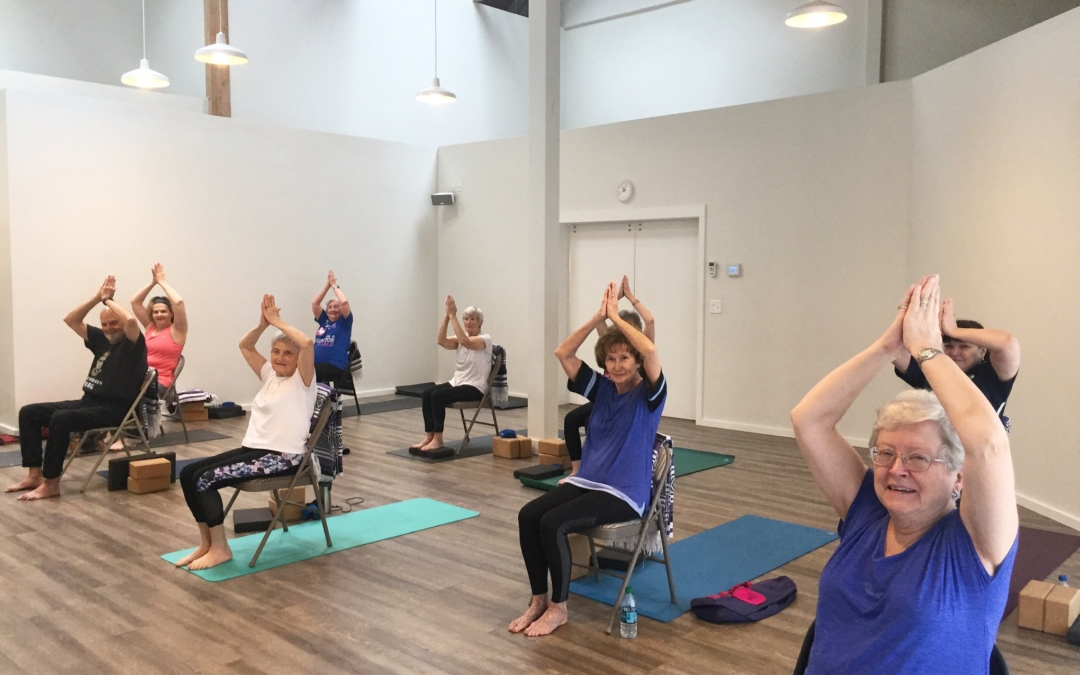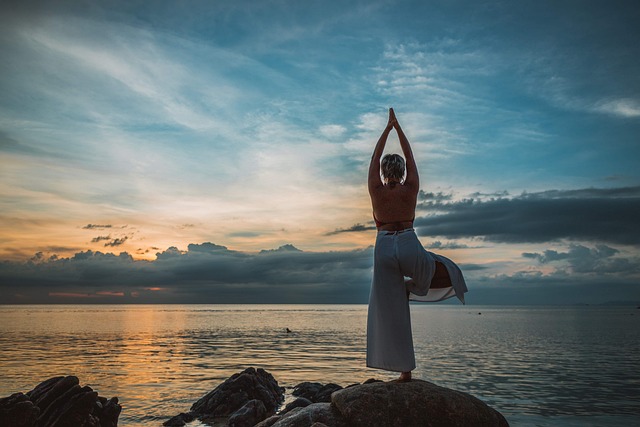
Discover 11 transformative meditation techniques that can bring you inner peace and serenity. In this informative article, we will explore various methods such as mindfulness, spiritual, focused, movement, mantra, loving-kindness, visualization, body scan, and chakra meditation.
Each technique offers a unique approach to calming the mind, reducing stress, and promoting self-awareness. Whether you are a beginner or an experienced meditator, these must-try practices will guide you towards a state of tranquility and freedom.
Mindfulness Meditation
Mindfulness meditation is a practice focused on cultivating present-moment awareness and non-judgmental acceptance of one's thoughts, emotions, and sensations. It involves bringing one's attention to the present moment, without getting caught up in the past or future. Mindfulness techniques can be incorporated into daily life, helping individuals to become more aware of their thoughts and emotions, and enabling them to respond to situations with clarity and compassion.
Incorporating mindfulness into our lives can bring about a sense of freedom and liberation. By observing our thoughts without judgment, we can begin to understand the patterns and habits of our mind. This awareness allows us to break free from automatic reactions and make conscious choices in our actions and behavior.
Practicing mindfulness meditation regularly can lead to increased self-awareness, improved focus and concentration, reduced stress and anxiety, and a greater sense of overall well-being. By incorporating mindfulness techniques into our daily routine, we can cultivate a sense of freedom and peace within ourselves.
Spiritual Meditation
Spiritual meditation offers numerous benefits for individuals seeking inner peace and a deeper connection with their spirituality. This practice allows individuals to tap into their higher consciousness, leading to a greater sense of purpose and meaning in life.
Through various techniques, such as visualization, chanting, and focused breathing, individuals can deepen their spirituality and experience profound levels of inner peace and tranquility.

Benefits of Spiritual Meditation
One of the key advantages of engaging in spiritual meditation is the profound sense of tranquility it can bring.
Spiritual meditation goes beyond relaxation and stress reduction, as it focuses on connecting with higher consciousness and cultivating a sense of inner peace.
By quieting the mind and turning inward, individuals can tap into their spiritual essence and experience a deep sense of connection with something greater than themselves. This connection with higher consciousness can bring about a heightened awareness and understanding of the world around us, leading to a greater sense of purpose and fulfillment.
Additionally, spiritual meditation promotes the practice of loving kindness, which involves cultivating compassion and goodwill towards oneself and others.
This practice fosters positive emotions, reduces negative thoughts, and enhances overall well-being.
Techniques for Deepening Spirituality
To deepen one's spirituality through meditation, incorporating specific techniques can be highly beneficial. Here are three techniques that can help in finding inner peace and deepening spirituality:
- Mindfulness Meditation: By focusing on the present moment and observing sensations, thoughts, and emotions without judgment, mindfulness meditation allows individuals to develop a deeper understanding of themselves and their spiritual connection. It helps in cultivating a sense of gratitude, compassion, and acceptance.
- Loving-Kindness Meditation: This technique involves directing thoughts and well-wishes towards oneself, loved ones, acquaintances, and even difficult people. By fostering feelings of love, kindness, and compassion, individuals can strengthen their spiritual connection and develop a sense of interconnectedness with all beings.
- Mantra Meditation: Utilizing repetitive sounds or phrases, mantra meditation helps in quieting the mind and deepening concentration. By focusing on a specific mantra, individuals can enter a state of deep relaxation, heightened awareness, and spiritual transcendence.
Incorporating these techniques into one's meditation practice can greatly assist in deepening spirituality and finding inner peace.

Connecting With Higher Consciousness
Utilizing a powerful technique known as 'Transcendental Meditation', individuals can connect with higher consciousness and experience profound spiritual growth.
This form of meditation involves sitting in a comfortable position, closing the eyes, and repeating a mantra silently. The mantra serves as a vehicle to quiet the mind and go beyond the surface level of thoughts and emotions.
By transcending the ordinary thinking process, practitioners can tap into a higher state of consciousness and explore the depths of their being. This exploration of higher consciousness allows individuals to connect with divine energy and experience a sense of oneness with the universe.
Through regular practice, spiritual seekers can deepen their connection with the higher realms and cultivate a greater sense of inner peace and fulfillment.
Focused Meditation
Focused meditation is an effective technique that allows individuals to enhance concentration and cultivate a sense of tranquility through the deliberate and sustained focus on a single point of attention. This form of meditation is particularly beneficial for those seeking freedom from distractions and a deeper connection with their inner selves. By honing their focused attention, practitioners can develop a heightened sense of awareness and clarity in their thoughts and actions.
Here are three key elements of focused meditation:
- Point of focus: Practitioners choose a specific object, such as a candle flame or their breath, to anchor their attention. This point of focus serves as a focal point for their concentration.
- Mindful observation: The individual directs their attention solely to the chosen point of focus, observing it with curiosity and non-judgment. This helps to cultivate a state of mindfulness and presence.
- Refocusing practice: As the mind inevitably wanders, the practitioner gently redirects their attention back to the chosen point of focus. This process strengthens the ability to refocus and maintain concentration.
Movement Meditation
Movement meditation is a form of meditation that involves incorporating physical movement into the practice. It can take various forms, such as dancing, walking mindfully, or practicing yoga.

These techniques allow individuals to cultivate inner peace through the synergy of body and mind, promoting relaxation, mindfulness, and self-awareness.
Dancing as Meditation
Dancing can be a transformative practice for achieving inner peace and cultivating mindfulness. It is a form of movement meditation that allows individuals to express themselves freely and connect with their bodies in a profound way.
Here are three ways in which dancing can be a powerful tool for meditation:
- Dancing therapy: Dancing can serve as a therapeutic practice, helping individuals release emotional blockages and heal past traumas. By moving their bodies in a rhythmic and intentional way, people can tap into their emotions and find catharsis.
- Dance meditation: Dancing can be a form of meditation, where individuals focus their attention on the movement of their bodies and the sensations they experience. This mindful dance practice allows people to be fully present in the moment and cultivate a sense of inner calm and clarity.
- Freedom of expression: Dancing provides an outlet for self-expression and creativity. It allows individuals to let go of inhibitions, break free from societal norms, and explore their authentic selves. Through dance, people can find liberation and a deep sense of freedom.
Incorporating dancing into a meditation practice can bring about a harmonious blend of movement, mindfulness, and self-discovery, leading to inner peace and personal growth.
Walking Mindfully
Walking mindfully is a practice that allows individuals to integrate movement into their meditation practice, fostering a deeper connection with their bodies and promoting inner peace. Mindful walking, also known as walking meditation, is a technique that involves bringing full awareness to the act of walking. Instead of simply moving from one place to another, mindful walking encourages individuals to focus on the sensations of each step, the feeling of the ground beneath their feet, and the movement of their body.
This practice can be done indoors or outdoors, and it offers numerous benefits. Walking mindfully can help reduce stress, increase mental clarity, improve concentration, and enhance overall well-being. It allows individuals to slow down, be present in the moment, and cultivate a sense of peace and tranquility.
Incorporating mindful walking into a daily routine can be a powerful way to find inner peace and reconnect with oneself.

Yoga for Inner Peace
Continuing the exploration of integrating movement into meditation, the next technique for cultivating inner peace is through the practice of yoga. Yoga, an ancient practice originating in India, combines physical postures, breath control, and meditation to promote holistic well-being.
Here are three yoga practices that can help you find stress relief and relaxation:
- Savasana (Corpse Pose): This pose involves lying flat on your back, allowing your body to fully relax and release tension. It is often practiced at the end of a yoga session to promote deep relaxation.
- Child's Pose (Balasana): This gentle forward bend stretches the back, hips, and shoulders, while also calming the mind and relieving stress. It is a resting pose that can be practiced anytime you need a moment of tranquility.
- Legs-Up-the-Wall Pose (Viparita Karani): By placing your legs up against a wall, this pose helps to calm the nervous system, reduce anxiety, and relieve fatigue. It is a soothing and rejuvenating pose that can be practiced at the end of a long day.
Mantra Meditation
One popular meditation technique for achieving inner peace is mantra meditation. Mantra meditation involves repeating a specific word, phrase, or sound to focus the mind and cultivate a state of deep relaxation. The word 'mantra' originates from Sanskrit and translates to 'mind tool' or 'instrument of thought.' By repeating a mantra, individuals can calm their thoughts, reduce stress, and enter a state of heightened awareness.
The benefits of mantra meditation are numerous. Firstly, it helps to quiet the mind and silence the constant chatter of thoughts. This promotes a sense of inner peace and tranquility. Additionally, mantra meditation can enhance concentration and focus, improve self-awareness, and increase overall mental clarity.
It has also been found to reduce anxiety, depression, and insomnia. Regular practice of mantra meditation can lead to a greater sense of self-acceptance and contentment, allowing individuals to experience a deeper connection with themselves and the world around them.
Transcendental Meditation
Moving beyond mantra meditation, another powerful technique for achieving inner peace is Transcendental Meditation. This practice, popularized by Maharishi Mahesh Yogi, involves the use of a personal mantra to help the mind transcend ordinary thinking and access a state of deep relaxation and heightened awareness.
Here are three key benefits of transcendental meditation:

- Stress Reduction: Transcendental Meditation has been proven to significantly reduce stress and anxiety levels. By effortlessly transcending the mind's active thinking process, this technique allows individuals to experience a state of deep relaxation, promoting overall calmness and well-being.
- Improved Focus and Clarity: Regular practice of transcendental meditation enhances concentration and mental clarity. By quieting the mind and accessing deeper levels of awareness, individuals can experience improved focus, creativity, and problem-solving abilities.
- Enhanced Self-Discovery: Transcendental Meditation provides a pathway to self-discovery and self-realization. By going beyond the surface level of the mind, individuals can gain insights into their true nature and develop a stronger connection with their inner self.
Progressive Relaxation
Another effective technique for achieving inner peace is progressive relaxation, which involves systematically tensing and releasing different muscle groups to induce a state of deep relaxation and calmness. This technique is based on the principle that physical relaxation can lead to mental and emotional relaxation. By consciously tensing and releasing each muscle group, individuals can experience a deepening sense of relaxation throughout their entire body.
Progressive relaxation is often used as a foundational practice in meditation and stress reduction programs. It helps individuals become more aware of the physical sensations in their body, allowing them to release tension and let go of stress. As the body relaxes, the mind follows suit, leading to a greater sense of tranquility and inner peace.
To deepen the relaxation experienced through progressive relaxation, individuals can incorporate additional techniques such as deep breathing, visualization, or guided imagery. These complementary practices further enhance the relaxation response and promote a greater sense of well-being. By incorporating progressive relaxation and other deepening relaxation techniques into their daily routine, individuals can cultivate a lasting sense of inner peace and freedom from the stresses of everyday life.
Loving-Kindness Meditation
Loving-Kindness Meditation, also known as Metta meditation, is a practice that focuses on cultivating feelings of love, kindness, and compassion towards oneself and others.
This meditation technique has been found to have numerous benefits, including reducing stress, increasing positive emotions, and improving relationships.
To practice loving-kindness meditation, one typically starts by directing loving-kindness towards oneself and then gradually extends it to loved ones, neutral people, and even difficult individuals.
Benefits of Loving-Kindness
Practicing Loving-Kindness meditation can cultivate empathy and compassion towards oneself and others. This powerful meditation technique offers numerous benefits that can greatly enhance one's well-being and relationships. Here are three key benefits of Loving-Kindness:

- Increased compassion: Engaging in Loving-Kindness meditation helps develop a deep sense of compassion towards oneself and others. It allows individuals to acknowledge and embrace their own suffering, as well as the suffering of others, leading to a greater understanding and empathy towards all beings.
- Reduced stress and anxiety: Regularly practicing Loving-Kindness meditation has been shown to reduce stress and anxiety levels. By cultivating feelings of love, kindness, and acceptance, individuals can experience a sense of calm and inner peace. This practice also helps in building emotional resilience, enabling individuals to better handle challenging situations.
- Improved relationships: Loving-Kindness meditation promotes positive interpersonal connections. By cultivating feelings of love and kindness towards oneself and others, individuals can enhance their relationships, fostering understanding, forgiveness, and empathy.
How to Practice?
To effectively practice Loving-Kindness meditation, it is essential to establish a peaceful and quiet environment conducive to deep introspection and contemplation. Start by finding a comfortable spot where you can sit or lie down without any distractions.
Close your eyes and take a few deep breaths to relax your body and mind. Begin by focusing on your breath, allowing it to become calm and steady.
Then, bring to mind a person or a group of people that you care about deeply. Silently repeat phrases of goodwill and kindness towards them, such as 'May you be happy, may you be healthy, may you be safe.'
As you continue to practice, you can expand your loving-kindness towards yourself, acquaintances, and even those you may have difficulties with. The key is to cultivate genuine feelings of love, compassion, and empathy towards all beings.
Through this meditation, you can find inner calmness and foster a sense of interconnectedness with the world around you.
Visualization Meditation
One effective meditation technique for cultivating inner peace is visualization meditation. This practice involves using guided imagery and creative visualization to create a mental picture of a desired outcome or state of being. By engaging the power of the imagination, visualization meditation allows individuals to tap into their inner resources and manifest positive changes in their lives.
Here are three key aspects of visualization meditation:

- Guided Imagery: This technique involves using a recorded or scripted meditation that guides individuals through a vivid mental journey. By following the instructions, the practitioner can enter a state of deep relaxation and explore their inner landscape.
- Creative Visualization: This aspect of visualization meditation involves consciously creating mental images of desired outcomes or goals. By visualizing success, abundance, or inner peace, individuals can harness the power of their thoughts and intentions to manifest their desires.
- Emotional Engagement: Visualization meditation encourages individuals to not only visualize their desired outcomes but also to engage their emotions and senses. By evoking positive emotions such as joy, gratitude, and love, practitioners can enhance the effectiveness of their visualizations and bring about profound inner transformation.
Through the practice of visualization meditation, individuals can harness the power of their imagination to cultivate inner peace, manifest their desires, and create positive change in their lives.
Body Scan
The practice of body scan meditation, which involves systematically focusing on different parts of the body, is a powerful technique for cultivating mindfulness and inner peace. This guided meditation encourages individuals to bring their attention to each part of the body, starting from the toes and moving upwards towards the head, or vice versa.
As they focus on each body part, they develop a deeper sense of body awareness, noticing any physical sensations, tension, or discomfort that may be present. By observing these sensations without judgment, individuals can cultivate a sense of acceptance and relaxation.
Body scan meditation helps to bring attention to the present moment, allowing individuals to connect with their bodies and release any tension or stress they may be holding. This technique is particularly beneficial for those seeking a greater sense of inner peace and overall well-being.
Chakra Meditation
Chakra meditation is a practice that focuses on the energy centers in the body, known as chakras. These energy centers are believed to play a vital role in our physical, emotional, and spiritual well-being. Chakra meditation aims to balance and clear energy blockages within these chakras, promoting a sense of harmony and inner peace.
To engage in chakra meditation, you can follow these steps:
- Find a quiet and comfortable space where you can sit or lie down.
- Close your eyes and take several deep breaths to calm your mind and body.
- Visualize each chakra, starting from the root chakra at the base of your spine and moving upwards to the crown chakra at the top of your head. Imagine each chakra glowing and radiating vibrant energy.
Frequently Asked Questions
How Long Should I Practice Mindfulness Meditation Each Day?
The duration of mindfulness meditation practice varies depending on individual preferences and schedules. It is recommended to start with shorter sessions and gradually increase the time as one gets comfortable. Consistency and regularity are key for reaping the benefits of this practice.

Can Spiritual Meditation Help Me Connect With a Higher Power?
Spiritual meditation can indeed help individuals connect with a higher power, offering numerous benefits such as increased self-awareness, inner peace, and a deeper sense of purpose. There are various ways to enhance this spiritual connection through meditation practices.
Is Movement Meditation Suitable for Beginners?
Movement meditation is suitable for beginners as it offers numerous benefits for stress relief. By incorporating gentle movements, such as walking or yoga, into a daily routine, individuals can experience improved mental and physical well-being while achieving inner peace.
What Is the Significance of Mantras in Mantra Meditation?
The significance of mantras in mantra meditation lies in their ability to focus the mind, enhance concentration, and promote inner peace. Incorporating effective techniques such as chanting mantras can lead to a deeper state of relaxation and spiritual growth.
Visualization meditation can indeed help improve performance in sports and other activities. By mentally rehearsing desired outcomes and creating vivid mental images, individuals can enhance focus, motivation, and overall performance, leading to better results and increased inner peace.
 Business & FinanceHealth & MedicineTechnologyLifestyle & CultureScience & EnvironmentWorld NewsPrivacy PolicyTerms And Conditions
Business & FinanceHealth & MedicineTechnologyLifestyle & CultureScience & EnvironmentWorld NewsPrivacy PolicyTerms And Conditions
